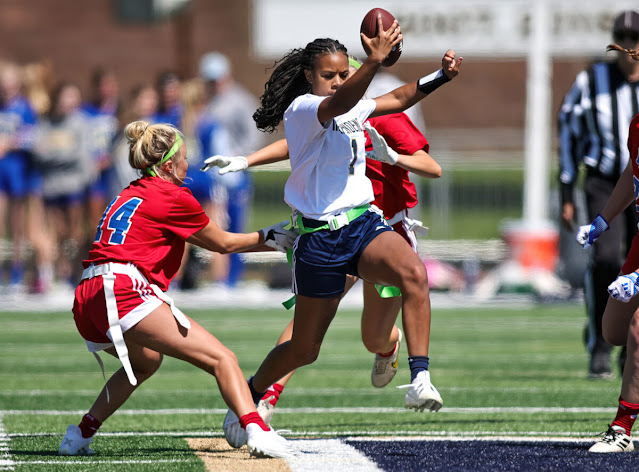Welcome to our newest edition - Flag Football. This is a great opportunity to learn more about the history and popularity of this sport.
What is Flag Football?
Flag football, a lighter, more accessible version of traditional American football, has been a staple in community parks, schools, and recreation leagues across the U.S. for decades. While not yet as widespread as running clubs or the newly popular pickle-ball leagues, flag football has been making strides in major metropolitan areas, particularly in San
Francisco and Los Angeles and has been making raves for its revived popularity in the mainstream media. This blog explores flag football's history, its current popularity, and what keeps it a favorite for many—albeit slightly out of the spotlight.
How long has Flag Football Been Around?
Flag football began as an alternative to tackle football, with the earliest leagues forming in the 1930s and 1940s as a safe, non-contact sport for military personnel and recreational players. Its appeal lies in retaining the strategy, teamwork, and excitement of football without the risks of contact. The game’s flexibility has led to its integration into school programs, local leagues, and amateur competitions, establishing a legacy that supports local communities.
How it popularity fares in San Francisco and Los Angeles
In recent years, flag football leagues have gained momentum in both the Bay Area and LA, attracting a diverse range of players, from competitive athletes to casual enthusiasts. Organizations like the Bay Area Flag Football League and the LA Flag Football League host regular games, offer inclusive opportunities for beginners, and celebrate competitive community spirit. Events and tournaments draw a dedicated fan base, and it’s clear that flag football is carving out a unique niche in both cities.
How does its popularity compare to other sports?
Despite its growth, flag football hasn’t reached the current popularity levels of running clubs or pickle-ball, especially among new sports enthusiasts. Some of the reasons include:
- Space and Equipment Barrier: Unlike running or even pickle-ball, flag football requires access to a full field and a sizable team of players, which can be limiting.
- Time Commitment: Games require coordination and a scheduled block of time, making it less spontaneous than grabbing a paddle or running shoes.
- Skill Levels and Physical Demands: The game has a relatively harder learning curve, especially for those without a football background, which can discourage beginners. Flag football’s fast-paced(and arguably physically demanding) nature, while exhilarating, can be a barrier for those looking for lower-intensity sports.
The Takeaways?
As flag football continues to make headlines and attract enthusiasts in California, it remains a symbol of community and competition, blending the spirit of American football with accessibility for everyone. For those looking for something beyond their typical run or pickle-ball match, flag football offers a dynamic, inclusive way to connect with sports. Whether you’re in San Francisco, LA, or beyond, consider giving flag football a try—you might just discover a new favorite! You can do so now by joining us on the app to discover or create your own Football group.









Comments
Post a Comment